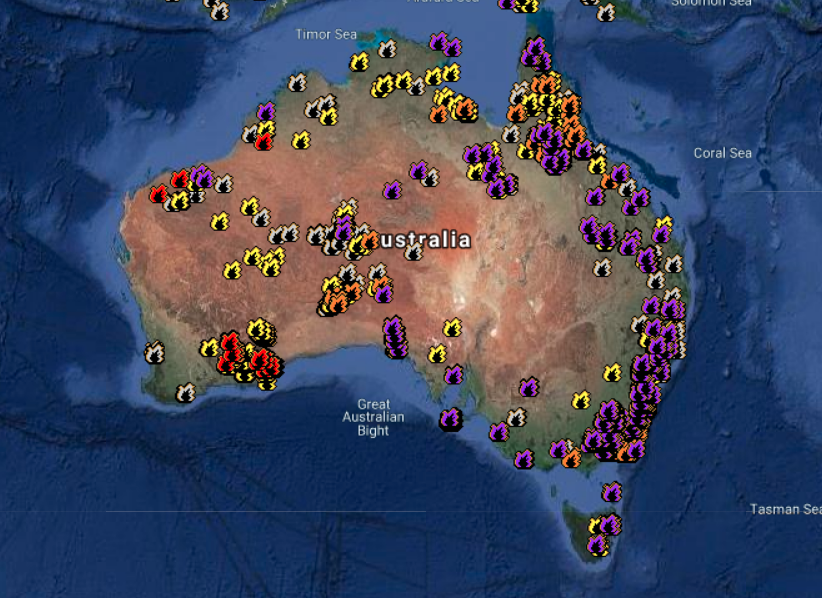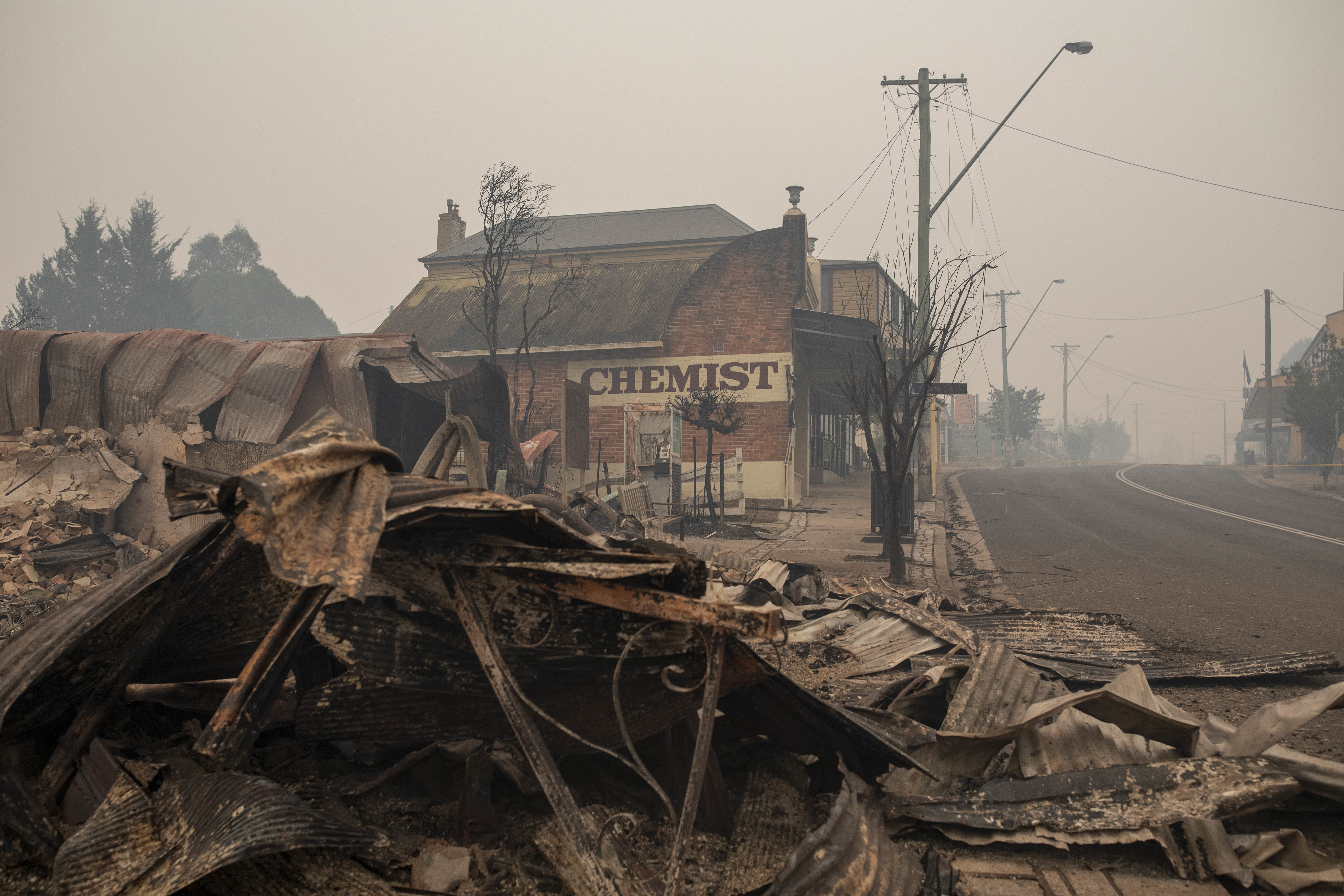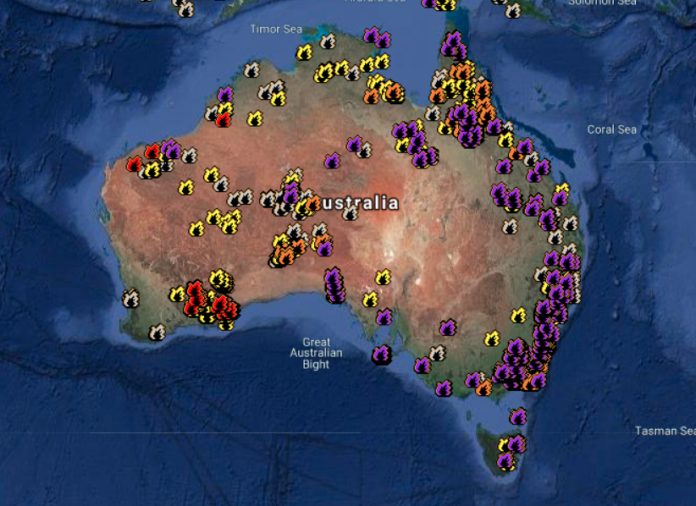Source: The Conversation (Au and NZ) – By Amanda Gearing, Journalist, author, broadcaster, Queensland University of Technology
As I write this, fires are consuming huge swathes of Australia and conditions are expected to worsen. The situation is attracting global interest, and reporting has been extensive.
But it isn’t always easy to find reliable information on how the situation is developing in specific areas that are home to your family and friends.
The following short guide draws on my experience covering bushfires as a reporter and my academic research. It may not be exhaustive but is intended to help Australians and their overseas family and friends source useful information and monitor the movement of fire fronts in real time.
Editors note: The Conversation will add to this list as the situation develops, and publish extensive bushfire analysis – on what’s happened, why and what’s next for Australia – in the coming days and weeks. Sign up to our daily newsletter to stay informed.
Australia-wide
The Geoscience Australia Sentinel Hotspot fire monitor shows the national picture.
The latest fire weather warnings are also available on the Bureau’s National Warnings page.
Read more: Friday essay: seeing the news up close, one devastating post at a time
Fast-breaking news and emergency broadcasts
The latest warnings and news coverage are available for each state via the ABC emergency broadcaster in each state and territory. For current ABC emergency alerts, warnings and news coverage see:
In fast-moving and emergency fire situations, ABC Radio posts directly to its Facebook page Bushfire Recovery Relief page.
For fast-breaking news, follow the Twitter hashtags: #ausfires, #bushfiresaustralia, #nswfires, #vicfires, #tasfires, and #wafires.
South eastern Australia
As strong south-easterly winds arrive during Friday night and on Saturday, it will be too dangerous in some areas for ground crews to confront fast-moving fire-fronts.
Evacuation orders were issued early on Friday for East Gippsland areas west of Kosciuszko National Park, south west of Canberra, in addition to evacuation orders issued for three other areas of south east NSW.
A fleet of aircraft monitors the movement of active fire fronts overnight using infrared cameras. During the day, waterbombing helicopters and fixed wing aircraft drop water and fire retardants to protect towns and houses where possible.
Aircraft movements over fire zones can be tracked in real time using Flightradar24.
Residents and visitors to south eastern Australia were asked to leave before the most severe weather conditions arrive on Saturday, with temperatures to soar to the mid to high 40s and for strong and changeable winds.

Victoria
In Victoria, a State of Disaster has been declared as dozens of new, active fires are burning across hundreds of square kilometres of inaccessible rugged and mountainous national parkland.
Residents of towns in East Gippsland were ordered to evacuate this week ahead of dangerous fire conditions.
To monitor active fires in Victoria, see Country Fire Authority notifications and listen to the emergency broadcaster, ABC Radio.
In Gippsland, listen to the local ABC Gippsland station and connect with the local Gippsland community for the latest updates at ABC Gippsland Facebook page.
Read more: Hunter, hunted: when the world catches on fire, how do predators respond?
New South Wales
To monitor the whole NSW fire situation, see the NSW Fires Near Me website and app.

People in several parts of NSW have been advised to leave now. These areas include:
- the south coast of NSW from Bateman’s Bay to Wonboyn near the Victorian border. Thousands of people trapped in the danger zone since New Year’s Eve are leaving by car or boat ahead of the worsening conditions;
- the Batlow/Wondalga area south west of the national capital, Canberra. Motorists have been told it is not safe to enter the area. People leaving have been told to travel north towards Wagga Wagga;
- the Shoalhaven near Sussex Inlet. Firefighters expect extreme conditions worse than those on New Year’s Eve. It is likely that roads will be cut, potentially trapping people on beaches again;
- the popular skiing resorts of the Snowy Monaro. Evacuations have been ordered from Australia’s highest peak, Mount Kosciusko, in Kosciusko National Park, and the towns of Jindabyne, Berridale and Anglers Reach. Updates are available via the Monaro Team Rural Fire Service;
- the area of Khancoban and the large area west of the Kosciuszko National Park. Fire authorities warn that communities in this area would not be defendable on Saturday.

Tasmania
In Tasmania, follow the Tasmanian Fire Service website for the latest updates and warnings. To connect with the community in Tasmania, see the Tasmania Fire Service Facebook page.
South Australia
In South Australia follow the South Australian Country Fire Service for updates. Current fires are burning in the Mount Lofty Ranges, the West Coast and the Riverland districts.
A dangerous fire is burning on Kangaroo Island south of Adelaide. An emergency warning was issued at 4.15pm Friday asking people to leave and warning the fire may pose a threat to lives directly in the path of the fire.
Western Australia
In Western Australia, follow Emergency WA. A total fire ban has been declared in Western Australia but there are no current emergency warnings. There are bushfire advice notifications for several fires burning in Western Australia.
Queensland
In Queensland, current bushfires can be monitored on the Queensland Government Rural Fire Service website. To monitor fire advice, watch and act alerts and emergency alerts see the Current Bushfires page of the Rural Fire Service website.
Traffic updates
Live traffic updates are available at Live Traffic NSW and via the Live Traffic NSW App.
Motorists can create a free account so they can plan their journey and get updates on traffic hazards if roads along your planned route become impassable.
Missing people
People who are leaving home due to the bushfires are asked to register with the Red Cross Register. Find. Reunite registration service online or at evacuation centres. Family and friends can use this site to check on their loved ones.
Connect with communities
If there’s a key area of interest for you, search for the local fire brigade and community Facebook page.
Communities that are facing severe fire threat include Mallacoota, Batlow; Shoalhaven and Snowy Monaro.
How you can help
Information on how you can help can be found on the NSW Rural Fire Service website here.
– ref. How to monitor the bushfires raging across Australia – http://theconversation.com/how-to-monitor-the-bushfires-raging-across-australia-129298









